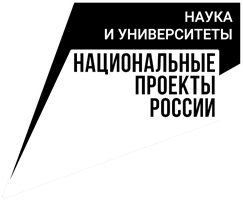Seminar Organizing Committee
| Leaders: |
Corr. RAS V.N. Lykosov (Marchuk Institute of Numerical Mathematics of RAS, RCC MSU); Doctor of Physics and Mathematics V.M. Stepanenko (RCC MSU, Geographical Faculty of Moscow State University) |
| Secretary: |
A.V. Debolsky (RCC MSU, A.M. Obukhov Institute of Atmospheric Physics of RAS) |
PROGRAM
17:15
| Shaposhnikov D.S. | Moscow Institute of Physics and Technology, Space Research Institute RAS |
| Rodin A.V. | Moscow Institute of Physics and Technology, Space Research Institute RAS |
| Medvedev A.S. | Max Planck Institute for Solar System Research, Gottingen, Germany |
NUMERICAL MODELING OF THE HYDROLOGICAL CYCLE OF MARS
The hydrological cycle plays a significant role in the Martian climate. Water vapor can be a very sensitive indicator of transport processes, which is especially important for three-dimensional climate models.
This study presents a new hydrological block of the general circulation model of the Martian atmosphere, developed at the Moscow Institute of Physics and Technology in collaboration with the Max Planck Institute of Solar System Research (MPI-MGCM). The model has a spectral dynamic core and successfully predicts wind speeds and temperatures due to the use of physical parameterizations characterized for both terrestrial and Martian models. The hydrological scheme includes two-moment microphysics, advection, diffusion, sedimentation of passive impurities depending on the average particle radius, a scheme of interaction with the surface, and photodissociation of water vapor.
The model successfully reproduces both the seasonal distribution of water vapor and ice, as well as the spatial distribution by latitudes and longitudes, which is confirmed by comparison with experimental data from SPICAM (IR spectrometer Mars Express), TES (Mars Global Surveyor) and CRISM (Mars Reconnaissance Orbiter). In addition, for individual orbits, the vertical profiles of the concentration of water vapor, ice particles and effective radii of water ice particles are well reproduced.
The simulations using an extended (up to 160 km) version of the model allow us to successfully demonstrate the process of water vapor transfer from the lower atmosphere to the upper one and to claim the leading role of dust distribution in this transport.
For communication on all issues related to the work of the seminar, please contact the Scientific Secretary Andrey Vladimirovich Debolsky at and.debol@srcc.msu.ru

